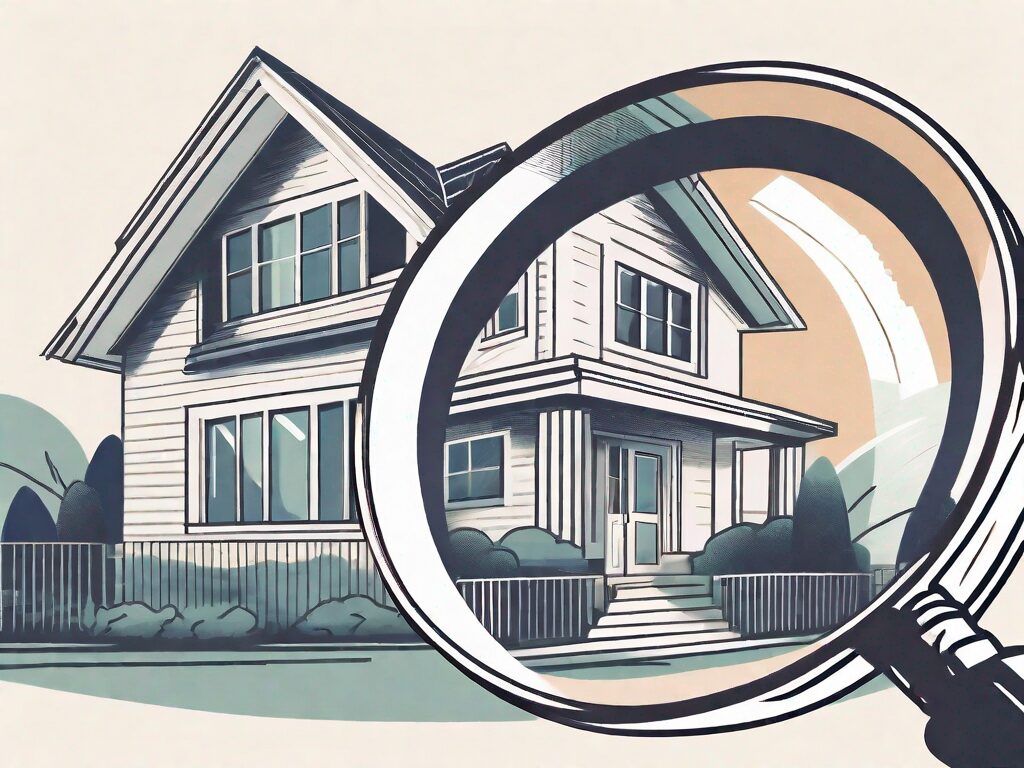
Agent A-Team or Solo Superhero? Finding the Right Real Estate Partner for Your Selling Journey in Wildwood Florida
When it comes to selling your home in Wildwood, Florida,…
January 29, 2024
Mortgage refinancing is a complex process that homeowners may consider for a variety of reasons. Whether you’re looking to secure a better interest rate, reduce your monthly payments, or tap into your home’s equity, understanding the ins and outs of refinancing is crucial. In this comprehensive guide, we will decode the process, explore its benefits, and provide you with valuable insights to help you make an informed decision about refinancing your home.
Before delving into the specifics, let’s start by understanding the basics of mortgage refinancing. At its core, refinancing involves replacing your existing mortgage with a new one. This new mortgage typically offers more favorable terms or conditions than your current loan, allowing you to save money or achieve other financial goals.
When considering a mortgage refinance, there are several factors to take into account. One of the most important factors is the current interest rates. Interest rates fluctuate over time, and it’s crucial to evaluate whether the current rates are lower than what you are currently paying. By securing a lower interest rate, you can potentially save a significant amount of money over the life of your loan.
In addition to interest rates, you should also consider the remaining term on your existing mortgage. If you have a long-term mortgage, refinancing into a shorter term can help you pay off your mortgage sooner. This can be particularly beneficial if you are looking to retire soon or want to be free of mortgage debt in a shorter timeframe.
Your credit score is another important factor to consider when contemplating a refinance. Lenders use your credit score to assess your creditworthiness and determine the interest rate you qualify for. If your credit score has improved since you obtained your current mortgage, refinancing can potentially allow you to secure a lower interest rate, saving you money in the long run.
When you refinance your mortgage, you essentially pay off your existing loan and take on a new one. This new loan may have a lower interest rate, shorter repayment term, or other favorable terms that can benefit your financial situation. However, it’s important to consider the costs associated with refinancing, such as closing fees, points, and potential prepayment penalties.
Closing fees are expenses incurred during the refinancing process, such as appraisal fees, title search fees, and attorney fees. These fees can vary depending on the lender and the location of your property. It’s important to factor in these costs when determining if refinancing is financially advantageous for you.
Points, also known as discount points, are fees paid upfront to the lender in exchange for a lower interest rate. Each point typically costs 1% of the loan amount and can result in a lower monthly payment. However, it’s essential to calculate whether the savings from a lower interest rate outweigh the upfront cost of the points.
Some mortgage agreements may include prepayment penalties, which are fees charged if you pay off your loan early. Before refinancing, it’s crucial to review your current mortgage terms to determine if there are any prepayment penalties. If there are, you’ll need to factor in these costs when evaluating the financial benefits of refinancing.
Another important aspect to understand is the concept of loan-to-value (LTV) ratio. LTV ratio compares the loan amount to the appraised value of your home. The higher the ratio, the riskier the loan may appear to lenders. It’s important to have a good understanding of your home’s value and how it relates to the loan amount when considering a refinance.
Refinancing your home can offer a range of benefits, depending on your circumstances. One of the primary advantages is the ability to secure a lower interest rate, which can result in substantial savings over the life of your loan. By lowering your interest rate even a fraction of a percent, you can potentially save thousands of dollars in interest payments.
Furthermore, refinancing can provide an opportunity to change the terms of your loan. If you’re currently in a long-term mortgage, you may choose to refinance into a shorter term to pay off your mortgage sooner. This can help you build equity faster and potentially save on interest payments.
Conversely, if you’re struggling to meet your monthly payments, refinancing into a longer term can help reduce the amount due each month. This can provide much-needed financial relief and make your mortgage more manageable.
Besides interest rate savings and term modifications, refinancing can also allow you to tap into your home’s equity. By refinancing for more than you currently owe, you can receive a cash payment that can be used for various purposes, such as home improvements, debt consolidation, or funding education expenses. This can be particularly beneficial if you have significant equity in your home and need access to additional funds.
It’s important to carefully consider your financial goals and evaluate the potential benefits and costs of refinancing before making a decision. Consulting with a mortgage professional can provide valuable insights and help you determine if refinancing is the right move for you.
Once you’ve decided to refinance your mortgage, the application process can seem overwhelming. However, with a step-by-step guide, you can navigate the process smoothly and efficiently.
1. Evaluate your financial situation: Review your credit score, debt-to-income ratio, and financial goals to determine if refinancing is the right choice for you.
Refinancing your mortgage can be a strategic financial move, but it’s crucial to assess your current financial situation before diving into the application process. Take a close look at your credit score, as it plays a significant role in determining the interest rate you’ll qualify for. Additionally, consider your debt-to-income ratio, which is the percentage of your monthly income that goes towards paying off debts. Evaluating your financial goals is also essential. Are you looking to lower your monthly payments, shorten the loan term, or tap into your home’s equity? Understanding your objectives will help you make an informed decision about refinancing.
2. Research lenders: Compare different lenders and their terms, rates, and fees. Gathering multiple quotes will help you find the best refinancing option for your needs.
When it comes to refinancing, not all lenders are created equal. It’s crucial to do your homework and research various lenders to find the one that offers the most favorable terms, rates, and fees. Gathering multiple quotes will give you a comprehensive understanding of the options available to you. Take the time to compare and contrast the lenders’ offerings, ensuring that you choose the one that aligns with your financial goals and provides the best value.
3. Gather necessary documents: Prepare all the required documents, such as pay stubs, tax returns, bank statements, and proof of homeowner’s insurance.
Before proceeding with the refinancing application, it’s essential to gather all the necessary documents. These documents typically include pay stubs, tax returns, bank statements, and proof of homeowner’s insurance. Lenders require these documents to assess your financial stability and determine your eligibility for refinancing. By preparing these documents ahead of time, you can streamline the application process and avoid any unnecessary delays.
4. Pre-qualification or pre-approval: Get pre-qualified or pre-approved by a lender to understand how much you can borrow and what terms you may qualify for.
Obtaining pre-qualification or pre-approval from a lender is a crucial step in the refinancing process. Pre-qualification provides an estimate of how much you can borrow, while pre-approval offers a more accurate assessment based on a thorough review of your financial documents. These steps allow you to understand your borrowing capacity and the terms you may qualify for, giving you a clear idea of what to expect during the refinancing process.
5. Submit your application: Complete the refinance application, providing all the necessary information accurately and promptly.
Once you’ve gathered all the required documents and obtained pre-qualification or pre-approval, it’s time to complete the refinance application. Ensure that you provide all the necessary information accurately and promptly. Any discrepancies or delays in submitting the application can prolong the process and potentially affect your chances of securing the refinancing.
6. Appraisal and home inspection: The lender will order an appraisal to determine the current value of your property and may require a home inspection for any necessary repairs.
As part of the refinancing process, the lender will order an appraisal to determine the current value of your property. This step is crucial as it helps the lender assess the loan-to-value ratio, which affects the terms and conditions of the refinancing. Additionally, depending on the lender’s requirements, a home inspection may be necessary to identify any repairs or maintenance issues that need to be addressed. These evaluations ensure that the property is in good condition and meets the lender’s standards.
7. Review and sign loan documents: Carefully review all the loan documents, including the Closing Disclosure, and sign them when you’re satisfied with the terms.
Before finalizing the refinancing, it’s essential to carefully review all the loan documents provided by the lender. These documents include the Closing Disclosure, which outlines the terms and conditions of the new loan. Take the time to review each document thoroughly, ensuring that you understand the terms and are comfortable with them. If you have any questions or concerns, don’t hesitate to seek clarification from the lender. Once you’re satisfied with the terms, sign the loan documents to proceed with the refinancing process.
8. Closing and funding: Attend the loan closing, where you’ll sign the final documents, and the new loan will be funded.
The final step in the refinancing process is attending the loan closing. During this meeting, you’ll sign the final loan documents, including the promissory note and mortgage agreement. The lender will then fund the new loan, and the refinancing process will be complete. It’s important to be prepared for the closing by bringing any required documentation and ensuring that you understand the terms of the new loan. By attending the closing and signing the final documents, you’ll finalize the refinancing and move forward with your new mortgage terms.
While the decision to refinance should be based on individual circumstances, there are common scenarios in which refinancing can make financial sense. Let’s explore some of the top reasons homeowners choose to refinance their mortgages.
Refinancing makes financial sense when you can secure an interest rate that is significantly lower than your current rate. By reducing your interest rate, you can lower your monthly payments and potentially save thousands of dollars over the life of your loan.
However, it’s important to note that refinancing involves upfront costs, such as closing fees and appraisal fees. These costs should be taken into consideration when determining whether refinancing is the right choice for you.
Furthermore, refinancing is an attractive option if you anticipate staying in your home for an extended period. The longer you stay in your home, the more time there is to recoup the costs associated with refinancing and benefit from the lower interest rates.
Additionally, if you have built up equity in your home, refinancing can allow you to access that equity and use it for other purposes, such as home improvements or debt consolidation.
Another reason homeowners consider refinancing is to reduce their monthly mortgage payments. This can be accomplished by securing a lower interest rate or extending the repayment term. By spreading your payments over a longer period, you can free up cash flow and potentially improve your financial situation.
However, it’s important to remember that extending the term of your loan means paying more in interest over time. Therefore, carefully evaluate the trade-off between lower monthly payments and the total cost of the loan before refinancing.
In addition to lowering your interest rate, refinancing can also help you eliminate private mortgage insurance (PMI) if you have built up enough equity in your home. PMI is typically required for borrowers who make a down payment of less than 20% of the home’s value. By refinancing, you may be able to remove this additional cost from your monthly mortgage payment.
Furthermore, refinancing can provide an opportunity to switch from an adjustable-rate mortgage (ARM) to a fixed-rate mortgage. This can provide stability and peace of mind, as your interest rate and monthly payments will remain the same throughout the life of the loan.
Lastly, refinancing can also be a way to consolidate high-interest debt. By refinancing your mortgage and using the proceeds to pay off credit card debt or other loans, you can potentially save money on interest and simplify your monthly payments.
In conclusion, refinancing your mortgage can be a strategic financial move that offers various benefits, such as lower interest rates, reduced monthly payments, access to home equity, elimination of PMI, stability with a fixed-rate mortgage, and debt consolidation. However, it’s important to carefully evaluate your individual circumstances and consider the associated costs before making a decision.
Deciding whether to refinance your home is a significant financial decision that requires careful consideration. While refinancing offers various benefits, it’s essential to weigh the costs, fees, and potential impact on your long-term financial goals.
Refinancing your home can be a smart move if you’re looking to lower your monthly mortgage payments or take advantage of lower interest rates. By refinancing, you may be able to secure a lower interest rate, which can save you thousands of dollars over the life of your loan. Additionally, refinancing can provide an opportunity to change the terms of your loan, such as switching from an adjustable-rate mortgage to a fixed-rate mortgage, giving you more stability and predictability in your monthly payments.
However, it’s important to consider the costs associated with refinancing. When you refinance your home, you’ll likely have to pay closing costs, which can range from 2% to 5% of the loan amount. These costs can include appraisal fees, title search fees, and attorney fees, among others. It’s crucial to factor in these expenses and determine if the potential savings from refinancing outweigh the upfront costs.
Another factor to consider is the impact of refinancing on your long-term financial goals. If you’re planning to sell your home in the near future, refinancing may not be the best option, as it can take several years to recoup the costs associated with refinancing. On the other hand, if you plan to stay in your home for an extended period, refinancing can be a strategic move to save money over time.
Consulting with a trusted mortgage professional can provide valuable insights and help you determine if refinancing is the right choice for you. They can explain the intricacies of the application process, analyze your financial situation, and provide personalized recommendations based on your needs. A mortgage professional can also help you navigate through the various loan options available and assist you in finding the best terms and rates that align with your financial goals.
Additionally, it’s important to consider your current financial situation and credit score when deciding to refinance. Lenders typically look at your credit score, debt-to-income ratio, and employment history to determine your eligibility for refinancing. If your credit score has improved since you initially obtained your mortgage, refinancing may allow you to qualify for better interest rates and loan terms.
Furthermore, before making a decision, it’s advisable to shop around and compare offers from different lenders. Each lender may have different rates, fees, and terms, so it’s essential to do your research and find the best deal for your specific circumstances. Online mortgage comparison tools can be helpful in comparing offers and understanding the potential savings from refinancing.
In conclusion, while refinancing your home can offer various benefits, it’s crucial to carefully evaluate the costs, fees, and potential impact on your long-term financial goals. Consulting with a mortgage professional, considering your current financial situation, and shopping around for the best deal can help you make an informed decision. Ultimately, the final verdict on whether to refinance your home depends on your individual circumstances and financial objectives.
1. Does refinancing require a appraisal?
Yes, in most cases refinancing requires an appraisal to determine the current market value of your home.
2. Can I refinance with bad credit?
While having a good credit score can increase your chances of getting approved for a refinance, it’s still possible to refinance with bad credit. However, you may face higher interest rates and less favorable terms.
3. What are closing costs, and how much should I expect to pay?
Closing costs are fees associated with finalizing the refinance. They typically include appraisal fees, title search fees, origination fees, and more. Closing costs can vary but generally range from 2% to 5% of the loan amount.
4. Can I refinance to cash out equity?
Yes, refinancing can allow you to tap into your home’s equity and receive a cash payment. This cash can be used for various purposes, such as home improvements, debt consolidation, or other financial needs.
5. How long does the refinancing process take?
The refinancing process can vary depending on the complexity of the loan and the efficiency of the lender. On average, it can take anywhere from 30 to 45 days from application to closing.
By understanding the intricacies of mortgage refinancing, you have the power to make an informed decision about your home’s financial future. Remember to carefully evaluate your financial situation, consider the benefits and costs, and consult with professionals to guide you through the process. With the right knowledge and resources, you can navigate the world of mortgage refinancing with confidence and achieve your financial goals.

If you want the Richr team to help you save thousands on your home just book a call.
 Book a call
Book a call